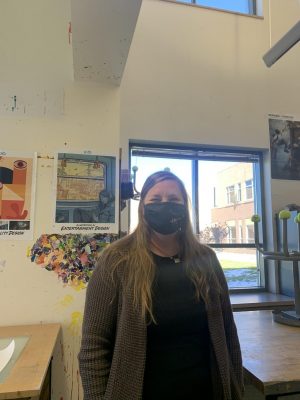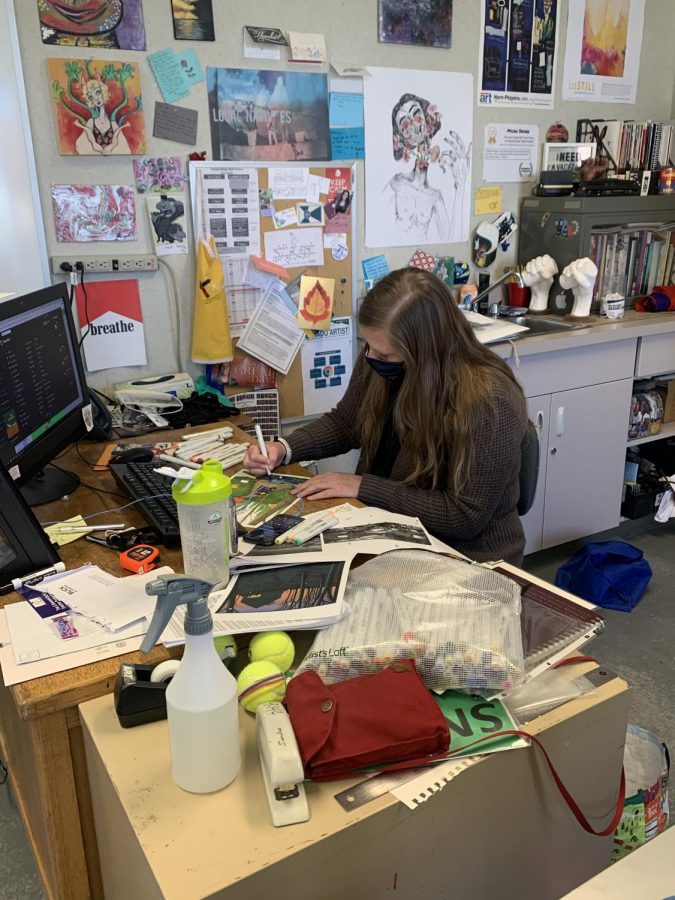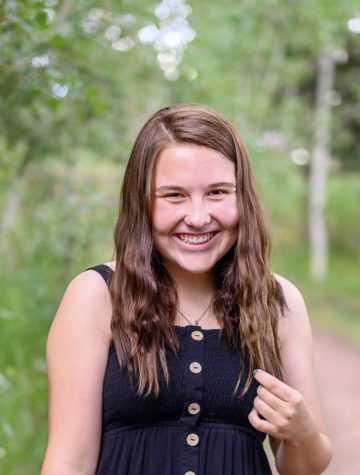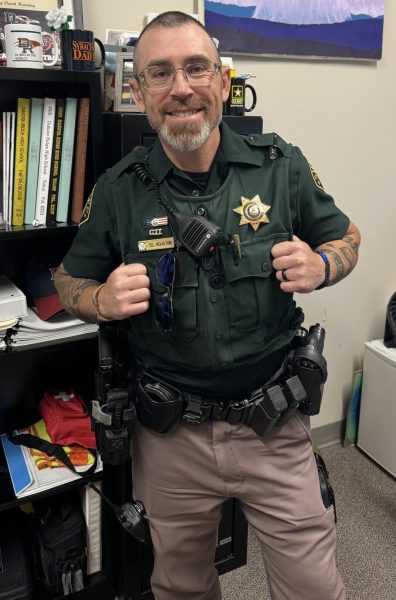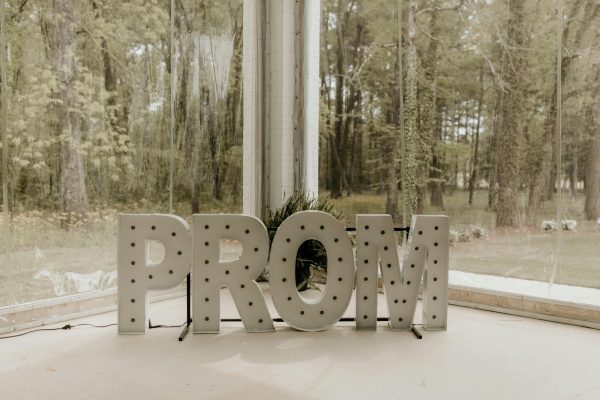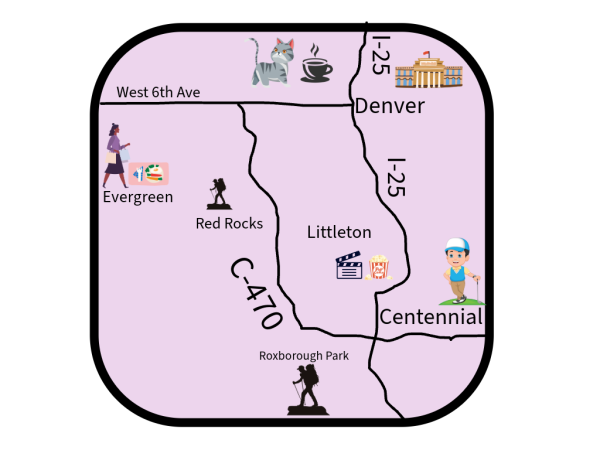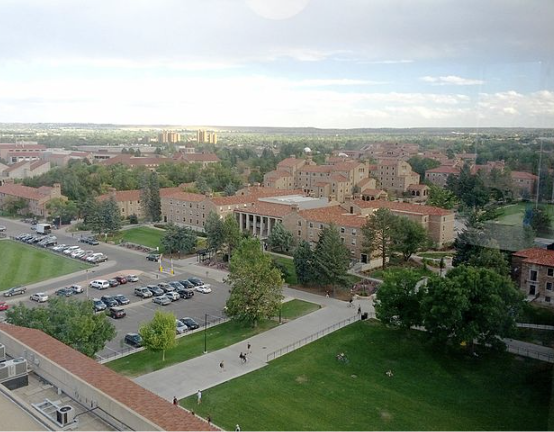Art is Never Finished
Snider creates an intricate art piece.
December 1, 2020
Sitting at her desk in the drawing room at Dakota Ridge High School, Micah Snider, an art teacher, uses markers and pens to create an interesting piece. Her walls are surrounded by her work and the work of her students, and her desk is covered with art and teaching supplies. There is almost no space untouched.
Originally from Oklahoma, Snider played soccer at York College for four years while also studying art, education, and psychology. She then transferred to Wichita State University, where she earned her BFA in drawing and painting.
Micah Snider has been teaching art for 16 years, four of those years at Dakota Ridge High School. She started off in Wichita, Kansas, but decided to move to Colorado because she loves the outdoors. She has taught K-12 and college level classes.
This school year has been very different for all teachers and students, but even more so for art teachers because of COVID-19. COVID-19 is an airborne virus that spread quickly throughout the world and came to America at the beginning of 2020. Ever since, schools have been closed off and on and disinfected frequently. Most Jeffco students decided to go back to school this year with a hybrid model.
Snider even had her own brush with COVID. Both of her parents got the virus but are now recovering. Her stepdad had to go to the ICU for a week, even though his health is great. He now has a pacemaker. Micah hopes that people will continue to take the virus seriously and to understand that it is taking a toll on medical professionals, hospital staff, and families. She believes everyone should be a part of the solution, even if they haven’t been directly affected by it.
In the hybrid learning mode, art students could no longer share supplies or move around the room to view each other’s artwork. Supplies were purchased for each student individually, with a limited amount of money. Creativity and ideas regarding how to share the supplies and work together were needed to make the classroom work correctly.
Snider had to make adjustments. “Honestly, (I’m) just doing the best I can. Like, checking in, they have to send me a lot of photographs, answering questions when I would normally show them how. Instead, now I have to tell them how. It’s hard, changing a hands-on class to something you have to describe verbally,” she said.
Although students who were in hybrid learning got more help than the students that were fully remote, all are doing well with their work, no matter the amount of intervention they had.
“They’re doing a really great job, but I think with more help in-person, things would be even better,” Snider said.
Even through all of the changes in the classroom, class projects are the same as they were the years before, and they take the same amount of time to complete. For beginning art students it is a bit more difficult though, because when they make mistakes they cannot be fixed in time. By the time the students send in a photo of their work, it’s already too late.
The students who were able to attend class in-person faced their own challenges. “There’s some things you have in the classroom that we don’t have at home, and then you’re like, ‘Oh, I need that,’ and you have to wait until your in-person day. It’s nicer to get feedback from a teacher in-person,” student January Lishner said.
“I wish I could do art, not at home, because I procrastinate too much with everything I do, so I end up doing it all at one time, so it would be easier if I could do it all here,” senior Peyton Lukens said.
Snider is also a working artist herself. She doesn’t limit herself to her classroom. She has sold many pieces of her own art and hasn’t restricted herself because of COVID-19 sanitization rules.
Snider says it’s much harder this school year than any year before. She has twice the work to do, and she has nine different classes to manage. She likes a challenge, though, and doesn’t want to make this year easier for herself and less fun for the kids.
For next school year, Snider hopes there will be a COVID-19 vaccine, but has already created plans for projects and how she will deal with the same situation with new students.
“I’m hoping we start moving back to in-person, and having that interaction back, without having to sit still and stay in your seat,” Snider said. “I want classes to be noisier. They are silent; it’s almost eerie. It’s not that kids are scared, or weird, or sad, they’re just working, but there are less of them.”
School has changed for everyone. Students, teachers, administrators, and parents have all been affected. Snider is hoping that from this sudden turn of events, people will learn empathy, compassion, flexibility, and grace.
Snider says that now there is a better appreciation for school. “I don’t hear kids hating school or not wanting to be here. And maybe that is what it took — to get it taken away.”
